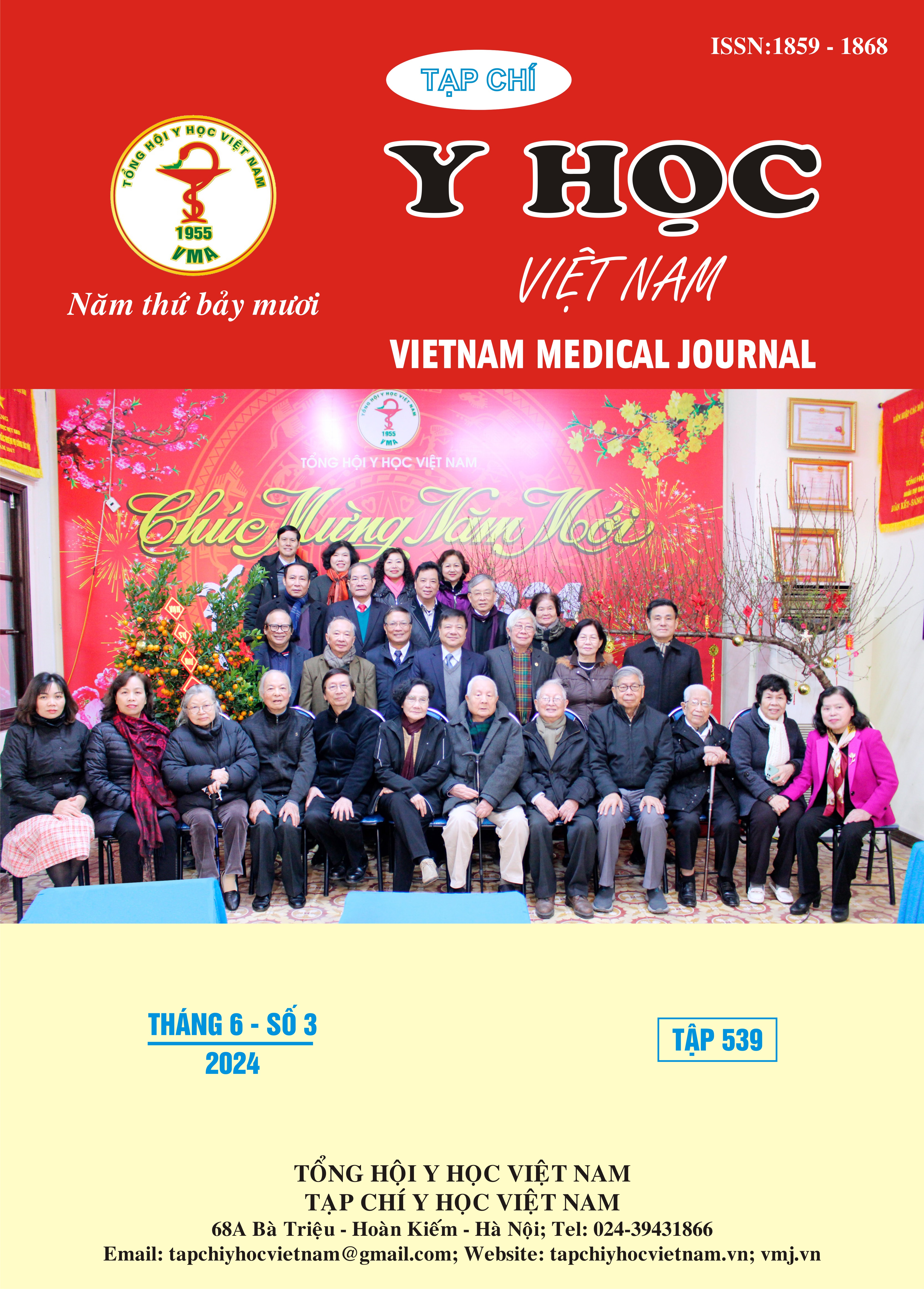EVALUATION OF TRACHEAL CANCER PATIENT CARE REGIMEN WITH TOTAL TRACHEAL RESECTION INDICATION AT CHO RAY HOSPITAL FROM JANUARY 2023 TO MAY 2023
Main Article Content
Abstract
Background: Laryngeal cancer is the second most common type of head and neck cancer. Patients with laryngeal cancer often come to the clinic at a late stage and must perform a total laryngectomy with cervical lymphadenectomy to ensure clean lesions and associated cervical lymph nodes. After total laryngectomy, the patient almost lost the function of speech and breathing, be greatly affected the quality of life. To ensure the success of total laryngectomy not only resolves the lesions, but also helps patients minimize postoperative complications, reintegrate into society and improve quality of life. Therefore, patients after total laryngectomy need to have a regimen of care and close monitoring. Objectives: Describe clinical characteristics, postoperative complications and care regimens for patients with laryngeal cancer who are indicated for total laryngectomy. Materials and methods: A descriptive cross-sectional study of 20 cases of laryngeal cancer with indications for total laryngectomy at the Department of Otolaryngology, Cho Ray Hospital. Results: The average of age is from 53 to 74, the common age is 59 - 69 (55%). Most cases occur in men (95%). Most of the cases using cigarette 11 (55%), the average package index per year is 26.7±10.3 while smoking and drinking alcohol 9 (45%), 5 cases have other medical diseases. 55% of patients come to the clinic late when symptoms appear for more than 3-6 months. The average of hospital discharge time was 14.2+3.0 days, the earliest is 9 days, the latest is 25 days. In this study, the most common postoperative complications were esophageal fistula in 3 cases (15%), followed by bleeding from the incision, tracheostomy stenosis, and pneumonia (5%). The average of oral feeding time was 9.2 ± 3.1 days, the earliest is 4 days and the latest is 16 days. Considering the overall weight compared to the height of the patient, 14/20 patients (70%) were malnourished according to BMI (when < 18.5 kg/m2). Most of the patients are early started feeding through the nasogastric tube is 18 cases (90%), 2 patients is fed through the late nasogastric tube (10%). In 20 cases, there are 4 cases of weight loss, 3 cases of unchanged weight and 13 cases of weight gain compared to the time of admission. Conclusion: Esophageal cancer, Total laryngectomy, Postoperative care.
Article Details
Keywords
Ung thư thanh quản, Cắt thanh quản toàn phần, Chăm sóc hậu phẫu
References
2. Trần Minh Trường (2009), chăm sóc bệnh nhân sau mổ cắt thanh quản toàn phần do ung thư. Tạp chí y học thành phố Hồ Chí Minh, tập 13, số 1
3. Dechaphunkul t., et al. (2003). “Malnutrition assessment in patients with cancers of the head and neck: a call to action anh consensus”, Crit Rev oncol Hematol, 88(2), pp. 459-476
4. Lưu Ngân Tâm (2010), “Đáp ứng chuyển hóa đối với tình trạng đói đơn thuần và bệnh lý”, tạp chí y học TP.HCM, 14 (2), tr.18-22
5. Nguyễn Xuân Cẩm Huyên (2011), “tiêu hóa ở miệng và thực quản”, Sinh lý học y khoa, Nhà xuất bản y học, 06, tr.296-301


